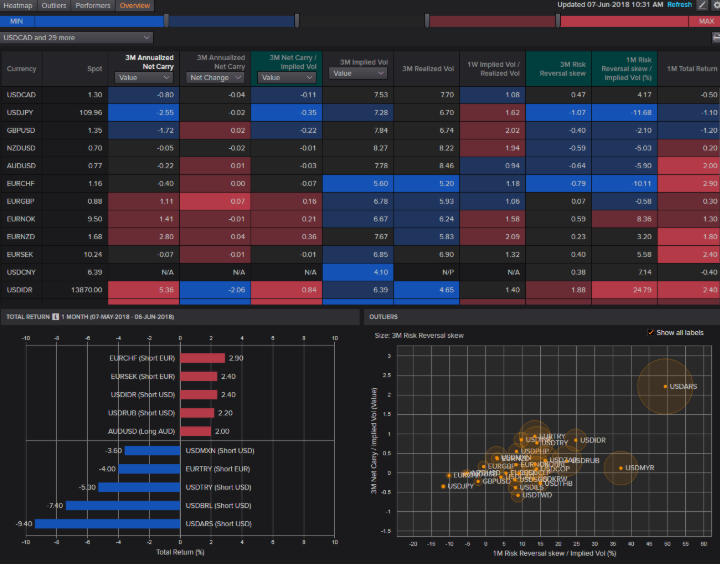Currency carry trades, which profit from interest rate differentials between countries, have long been a cornerstone of foreign exchange strategies. While FX forward-implied carry offers a logical starting point—reflecting potential returns if exchange rates remain stable—it often fails to capture deeper macroeconomic nuances. This post explores how adjusting carry signals for valuation imbalances can significantly refine their effectiveness.
Rethinking Traditional FX Carry
FX carry is essentially the difference between a currency’s forward and spot rates, representing the interest rate differential. These discrepancies usually mirror differences in central bank policies or reflect risk premia. Yet, raw carry figures can be misleading due to inflation variances, hedging costs, and market inefficiencies. To address these, the analysis draws on 25 currencies over two decades, integrating inflation expectations and market beta considerations.
A refined approach includes several standard corrections:
- Inflation Expectation Adjustments: Real carry—adjusted for expected inflation—is more informative than nominal differentials. Estimating this in real-time across countries is challenging, but formulaic models combining recent inflation data and central bank targets offer a workable solution.
- Hedging Cost Considerations: Not all currencies respond the same way to global risks. Adjusting for beta against a global market basket helps isolate pure FX premia.
- Data Smoothing and Liquidity Filters: Daily FX data is prone to anomalies, so smoothing through moving medians and filtering out illiquid episodes ensures cleaner signals.
With these adjustments, carry metrics become more reliable indicators of investor sentiment, risk compensation, and policy stance.
Incorporating Valuation Into Carry Metrics
One major shortfall of unadjusted carry signals is their ignorance of valuation—whether a currency is fundamentally cheap or expensive. A high carry on an already overvalued currency may suggest elevated downside risk, not opportunity. Purchasing Power Parity (PPP) offers a foundation for addressing this.
PPP-based valuation compares the cost of identical goods in different countries. While deviations from PPP are common and persistent (due to trade frictions, productivity gaps, etc.), long-term adjustments can reveal misalignments.
To integrate valuation into carry:
- Overvaluation Ratios: Calculate the percentage deviation of the current exchange rate from the PPP rate.
- Median Anchoring: Subtract long-term medians to isolate recent anomalies from structural differences.
- Partial Adjustments: Assume gradual correction—say, half the overvaluation reverting over three to six years—and apply this to reduce the carry signal.
This layered approach ensures that a currency’s carry is only treated as attractive if it’s not inflated by overvaluation.
How Valuation Adjustment Improves Strategy Outcomes
Testing across the entire currency panel reveals clear advantages. Carry strategies that factor in PPP adjustments outperform their traditional counterparts on nearly all metrics:
- Sharpe Ratios rose from 0.47 (unadjusted) to 0.53–0.62.
- Sortino Ratios improved from 0.70 to as high as 0.96.
- These gains were particularly pronounced post-2008, when simple carry strategies faltered.
Moreover, valuation-adjusted strategies showed better consistency, less exposure to extreme cycles, and lower correlation with major benchmarks like the S&P 500 and EUR/USD.
Beyond Directional Trades: Relative and Hedged Strategies
Valuation adjustments also enhance more sophisticated carry applications:
- Relative Carry Trades: By focusing on the difference between small-country currencies (excluding USD and EUR), the approach mitigates common-factor risks. Valuation-adjusted relative carry yielded Sharpe ratios up to 0.78—far superior to the 0.48 for unadjusted strategies.
- Hedged Carry Strategies: Incorporating hedge baskets to isolate country-specific risks adds another layer of precision. Even here, valuation enhancements nudged up performance, though gains were more modest (Sharpe ratios up to 0.87 vs. 0.71).
While hedging dilutes valuation’s relevance slightly—since only the primary leg is adjusted—it still contributes meaningfully to predictive accuracy.
Final Takeaways
Integrating valuation adjustments into FX carry strategies transforms a blunt tool into a more precise instrument. It aligns carry signals with macro fundamentals, reduces exposure to overpriced currencies, and improves performance across directional, relative, and hedged strategies.
However, the key lies not just in applying adjustments, but in understanding their interplay. The combination of inflation, beta, valuation, and liquidity filters is complex, and optimizing them requires both economic insight and rigorous empirical testing.
In summary, FX carry strategies that ignore valuation risk leaving returns on the table. By accounting for macroeconomic context, particularly through PPP-based measures, investors can build more resilient and intelligent currency portfolios.
